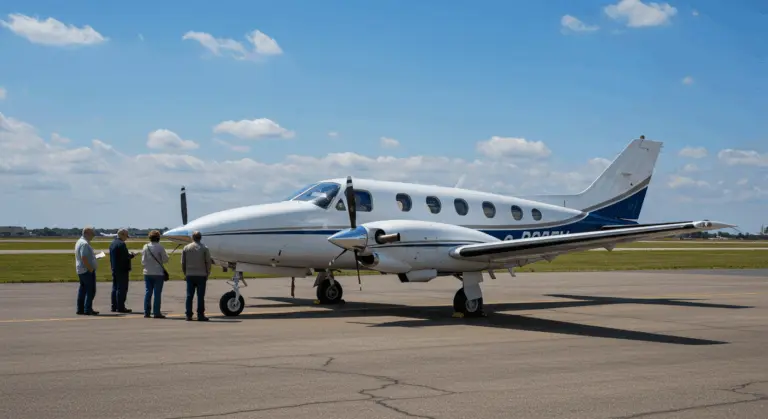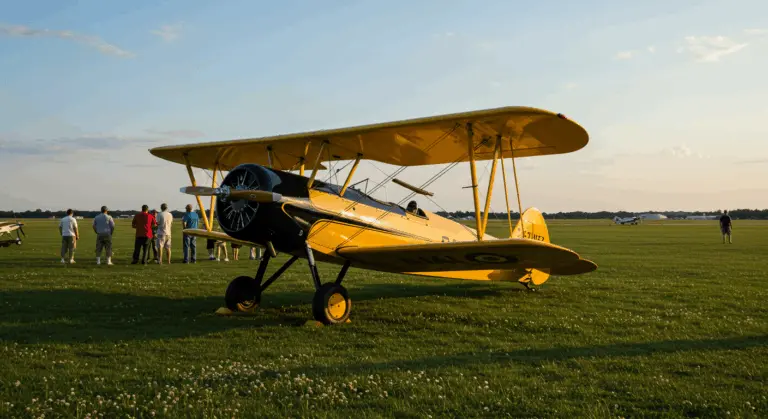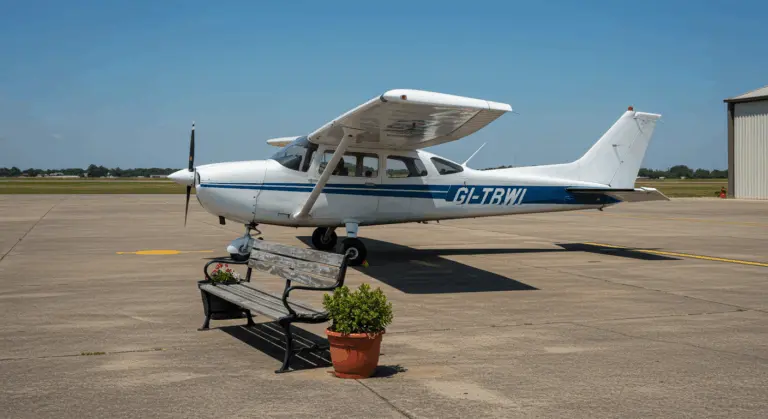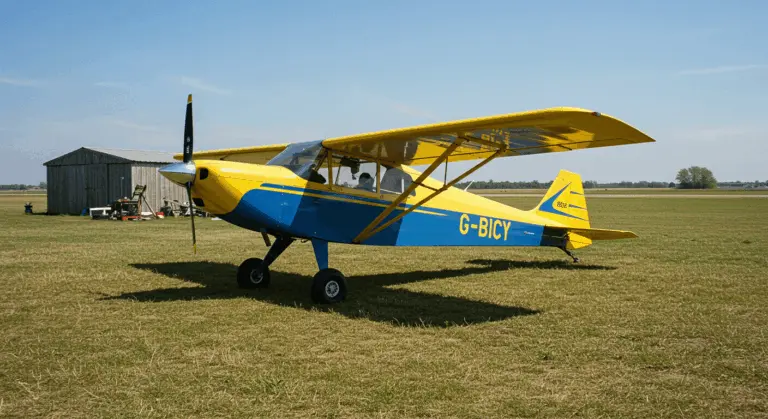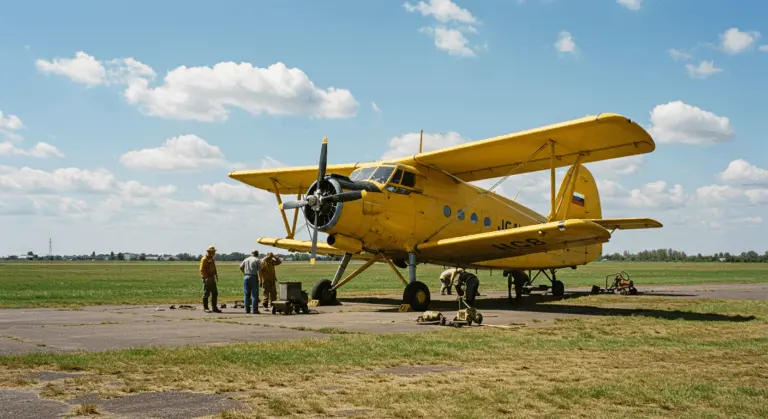Cirrus SR22 Aircraft – Specifications, Features, and History
Overview of the Cirrus SR22 Aircraft
The Cirrus SR22 stands as a single-engine four- or five-seat composite aircraft manufactured by Cirrus Aircraft of Duluth, Minnesota, since 2001. This aircraft has revolutionized the personal aircraft market. By combining performance, safety, and comfort that has made it one of the most successful general aviation aircraft of the 21st century.
Engineered with advanced composite materials, the SR22’s fuselage is constructed from two precisely crafted halves, joined and cured in an autoclave. The wings are designed around a bonded massive spar that forms a torsion box, creating an airframe with exceptional durability and superior crashworthiness. Later models feature a carbon fiber spar and redesigned wing for enhanced performance.
The SR22 boasts sports-sedan-like cabin ergonomics, delivering a comfortable environment for both pilots and passengers. The aircraft excels on journeys spanning 200 to 500 miles. The normally aspirated version delivers cruise speeds over 160 knots, while the turbocharged models can achieve 180 to 200 knots when cruising at altitudes above 11,000 feet.
With its 310 hp engine, the standard SR22 delivers a useful load of 519 kg, a maximum cruise speed of 185 knots, and an impressive range extending up to 1,170 nautical miles. The turbocharged SR22T variant significantly improves performance. Reaching altitudes of 25,000 feet, achieves a maximum cruise speed of 211 knots, and extends range to 1,200 nautical miles—making it equally compelling for weekend adventurers and demanding business travelers.
Specifications of the Cirrus SR22
The Cirrus SR22 builds upon its predecessor, the SR20, featuring a larger wing, enhanced fuel capacity, and a more powerful 310-HP Continental IO-500-N engine. Since its initial 2001 release, the SR22 has undergone continuous refinement throughout its production history.
The SR22 features the sophisticated Cirrus Perspective Touch by Garmin avionics suite, which includes:
-
Aircraft Systems Synoptic Pages
-
Alert-linked checklists
-
Bluetooth connectivity
-
Garmin 3D Safe Taxi
-
A sophisticated digital autopilot with Electronic Stability Protection (ESP)
These systems provide enhanced situational awareness and precise control to pilots.
In 2010, Cirrus introduced with the turbocharged SR22T’s debut. This variant improved performance capabilities, enabling pilots to confidently overfly adverse weather and mountainous terrain. The model features a robust 2000-hour TBO (Time Between Overhaul) engine, combining reliability with exceptional performance.
Current models include advanced features, including:
-
LED wing tip lights
-
Tubeless tires
-
Electronic standby instruments and USB ports
-
Advanced systems such as ADS-B, angle-of-attack indicators, and enhanced vision systems
Notably, every SR22 incorporates the groundbreaking Cirrus Airframe Parachute System (CAPS)—establishing an unprecedented safety benchmark in general aviation.
Performance Data of the SR22
The SR22 family showcases remarkable performance metrics, improving upon its earlier SR20 sibling.
Modern avionics and powerful engines enable these impressive performance capabilities. This combination of speed, range, and altitude performance makes the SR22 suitable across diverse mission profiles, from short recreational flights to longer cross-country journeys.
The SR22’s defining strength comes from balancing—impressive performance combined with robust safety features and intuitive operational simplicity. This balance has made it a benchmark in its class.
Key Features of the Cirrus SR22
Despite its impressive performance, the Cirrus SR22 remains refreshingly straightforward to operate. Consider the contrast with aircraft like the Cessna 210: the SR22 streamlines cockpit complexity by eliminating the gear lever, cowl flaps, and propeller control entirely. This results in an after-takeoff checklist containing just one item: retracting the flaps.
The SR22’s design DNA originated from experimental work, including an experimental proof-of-concept aircraft crafted from a modified Piper Vagabond. This experimental approach led to several distinctive features that have evolved into the modern SR22:
-
The use of leading-edge slats
-
Full-length chaperons
-
An efficient propulsion system
The cockpit environment focuses on comfort and reducing pilot workload. The side-stick controller, rather than a traditional yoke, provides improved visibility of the instrument panel and creates a more spacious cockpit feel. Meticulously positioned controls and switches follow an intuitive flow, enhancing situational awareness while minimizing pilot fatigue on extended journeys.
Contemporary SR22 models feature the advanced Cirrus Perspective glass cockpit, presenting seamlessly integrated flight and engine data across expansive, crystal-clear displays. This unified interface improves situational awareness by consolidating navigation, communication, traffic, terrain, and weather intelligence into one coherent system.
Safety Features of the SR22
The Cirrus SR22 has transformed general aviation safety through its comprehensive protective philosophy. Central to this approach is the Cirrus Airframe Parachute System (CAPS)—a whole-aircraft recovery parachute deployable in emergency situations to bring the entire aircraft safely earthward. The results are impressive: 107 successful deployments from 126 activations. This system hasn’t just saved numerous lives; it has redefined what’s possible in aircraft safety.
Working in concert with CAPS, the Electronic Stability Protection (ESP) system acts as a safety net, proactively preventing loss of control scenarios. ESP works like an electronic co-pilot that gently corrects unusual attitudes and helps maintain stable flight, particularly valuable in preventing spatial disorientation or loss of control in challenging conditions. Operating with subtle precision, the system applies gentle corrective forces whenever the aircraft ventures toward unusual attitudes or excessive bank angles.
The SR22 further uses NASA’s cuffed wing design, which reduces spin entry risk during stall conditions. This aerodynamic feature provides more predictable handling characteristics at low speeds and high angles of attack, instilling greater pilot confidence and expanding control margins during flight’s most critical phases.
A combination of physical and electronic features provides additional protective layers:
-
Airbag seatbelts and energy-absorbing seats
-
A reinforced cabin structure to protect occupants
-
An advanced avionics suite with synthetic vision, terrain awareness, traffic alerts, and weather information to enhance pilot decision-making.
History and Development of the Cirrus SR22
The Cirrus SR22 was developed to meet growing demand for enhanced speed, extended range, and cutting-edge avionics in general aviation. Building upon the solid foundation established by the SR20, engineers developed the SR22 as a more capable variant intended for pilots wanting elevated performance without compromising safety or operational elegance.
Following Federal Aviation Administration certification in November 2000, the first production models emerged from the assembly line in 2001. The initial SR22 featured a more powerful engine than its predecessor, alongside pioneering features destined to establish new benchmarks throughout the general aviation sector.
The SR22’s evolution includes several major updates:
-
G2 (2004): Introduced a redesigned fuselage and the now-standard all-glass cockpit, replacing traditional analog instruments.
-
G3 (2007): Incorporated a lighter, stronger carbon fiber wing spar, which improved performance.
-
G5 (2013): Increased the aircraft’s gross weight and useful load, and featured improved flap deployment speeds.
-
G6 (2017): Added distinctive wing tip lighting and further advanced the avionics suite.
Across its developmental journey, the SR22 has consistently advanced of safety and technology in single-engine aviation. Each generation has introduced innovations that have not only improved the aircraft’s capabilities but have also influenced design and safety considerations across the general aviation industry. This continued development has established the SR22’s status as one of the market’s most coveted personal aircraft.
Variants of the Cirrus SR22
The most significant variant is the SR22T’s introduction, featuring a turbocharged engine that improved the aircraft’s performance envelope. The turbocharged models allow pilots to operate at higher altitudes—above much of the weather—and achieve greater speeds, making them particularly useful for transcontinental journeys and challenging mountainous operations.
Beyond the standard models, Cirrus provides comprehensive customization through its exclusive Xi Design Studio. This program allows owners to personalize their aircraft with custom paint schemes, interior designs, and equipment packages, ensuring every SR22 can be precisely tailored to its owner’s unique preferences and operational requirements.
Operational History and Usage of the SR22
The SR22’s versatility and reliability have led to its adoption across diverse sectors beyond just private ownership:
-
Urban Air Mobility: Job Aviation uses the SR22 for air taxi services.
-
Private Air Charter: Fly Aeolus in Europe operates the SR22 in its air taxi fleet.
-
Military Training: The French Air and Space Force and the Royal Saudi Air Force use the SR22 as a training aircraft due to its advanced avionics.
-
Airline Flight Training: Emirates utilizes the SR22 to develop skills for professional aviation careers.


